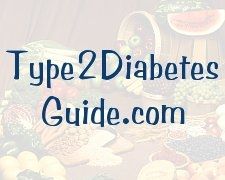Type 2 Diabetes - What do the Test Results Mean?
The bodies of people with type 2 diabetes have impaired abilities to process foods that contain carbohydrates, which our bodies convert into sugar. Thus a diabetes test consists of analyzing your blood sugar to find out how well your body can handle it. There are several types of tests your doctor may request you get done.
- Fasting blood sugar test: you'll be asked to fast (stop eating) for at least 8 hours. Many people find it convenient to eat dinner and then fast overnight, doing the test first thing in the morning. For people without diabetes, the normal range for this blood test is 70 to 100 mg/dL. If your blood sugar reading is between 100 and 125 mg/dL, you may be pre-diabetic. A level of 126 mg/dL or above suggests that you have diabetes.
- Random blood sugar test: this is when your blood sugar is tested at any time (randomly) - not necessarily after you eat or drink. Blood sugar levels in a person without diabetes do not fluctuate that much over the course of a day. Even after a meal, most people wouldn't have blood sugar higher than 200 mg/dL. So if your random blood sugar test result is higher than 200 mg/dL, it suggests you may have diabetes.
- Oral glucose tolerance test: This is a two-part test. First, your fasting blood sugar level is measured. Then you are given a sugary drink to consume. Your blood sugar level is measured again one hour and two hours after you drink. People without diabetes would show a blood sugar level of less than 200 mg/dL even after consuming the drink. A reading of 140 to 199 mg/dL suggests pre-diabetes, and a reading of 200 mg/dL or more, two hours after you drink, suggests diabetes.
The above readings are in mg/dL; to get them in mmol/L, see our conversion chart for blood sugar levels.
Tests are often repeated if the diabetes test results suggest pre-diabetes or diabetes. Your healthcare provider may repeat one or more of these tests, take a personal and family history, assess your risk factors, and discuss your symptoms prior to confirming a diagnosis of diabetes. Ask your doctor for help on how to read diabetes test results to ensure that you understand how well you're doing, and to determine your risk.
What Causes Diabetes?
Insulin Resistance
Signs of Diabetes
Hypoglycemia
Hyperglycemia
Glycemic Index
Diabetic Recipes
Feline Diabetes
Diabetes Diet Sheet
How to Control Diabetes Without Medication
What Foods Have a Low Glycemic Index?
Conversion Chart for Blood Sugar Levels




